By Jessy Wilson, Boise State M.S. Raptor Biology student
Hi! I am so excited to be joining IBO’s Team Goshawk as a new graduate student! I will be studying the newly renamed American Goshawk, with a special focus on the ecology of breeding goshawks. Goshawks in the IBO study area (southern ID, northern UT) have been reflecting trends of population declines as well as declining rates of occupancy and productivity. Additionally, the rate of breeding territory turnover has increased and is above the long-term average.
This suggests the goshawks in these areas are experiencing abnormal population changes.
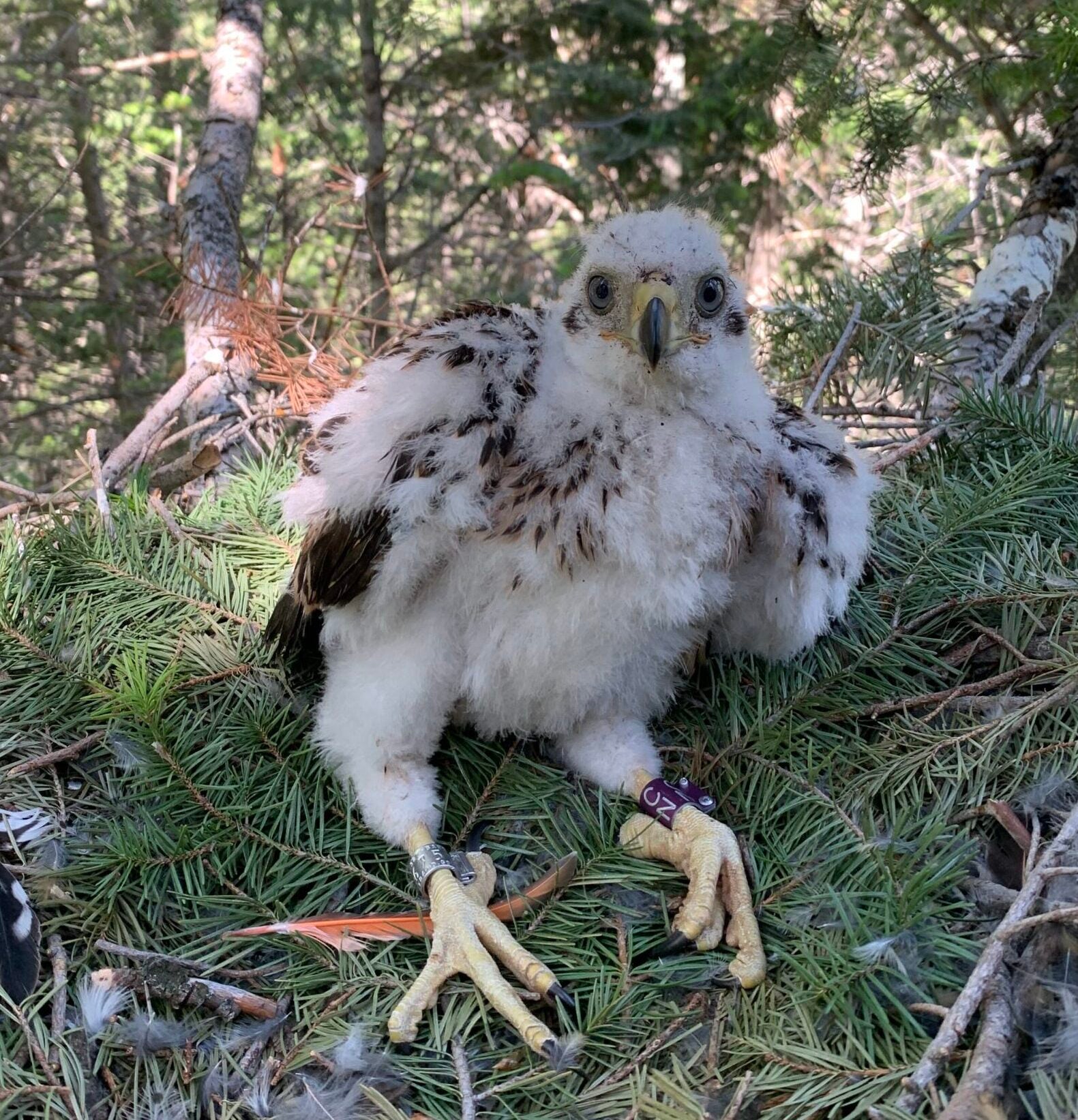
Even with IBO’s research on American Goshawks over the past several years, we still don’t know where goshawks travel when they leave a previously occupied territory (i.e., territory turnover event), how their breeding success compares in new locations, and how the habitat and landscape characteristics compare between known and unknown sites.
As a new Master’s student in Boise State’s Raptor Biology Program, I will be addressing these research questions and more with Jay Carlisle, Rob Miller, and the Intermountain Bird Observatory.
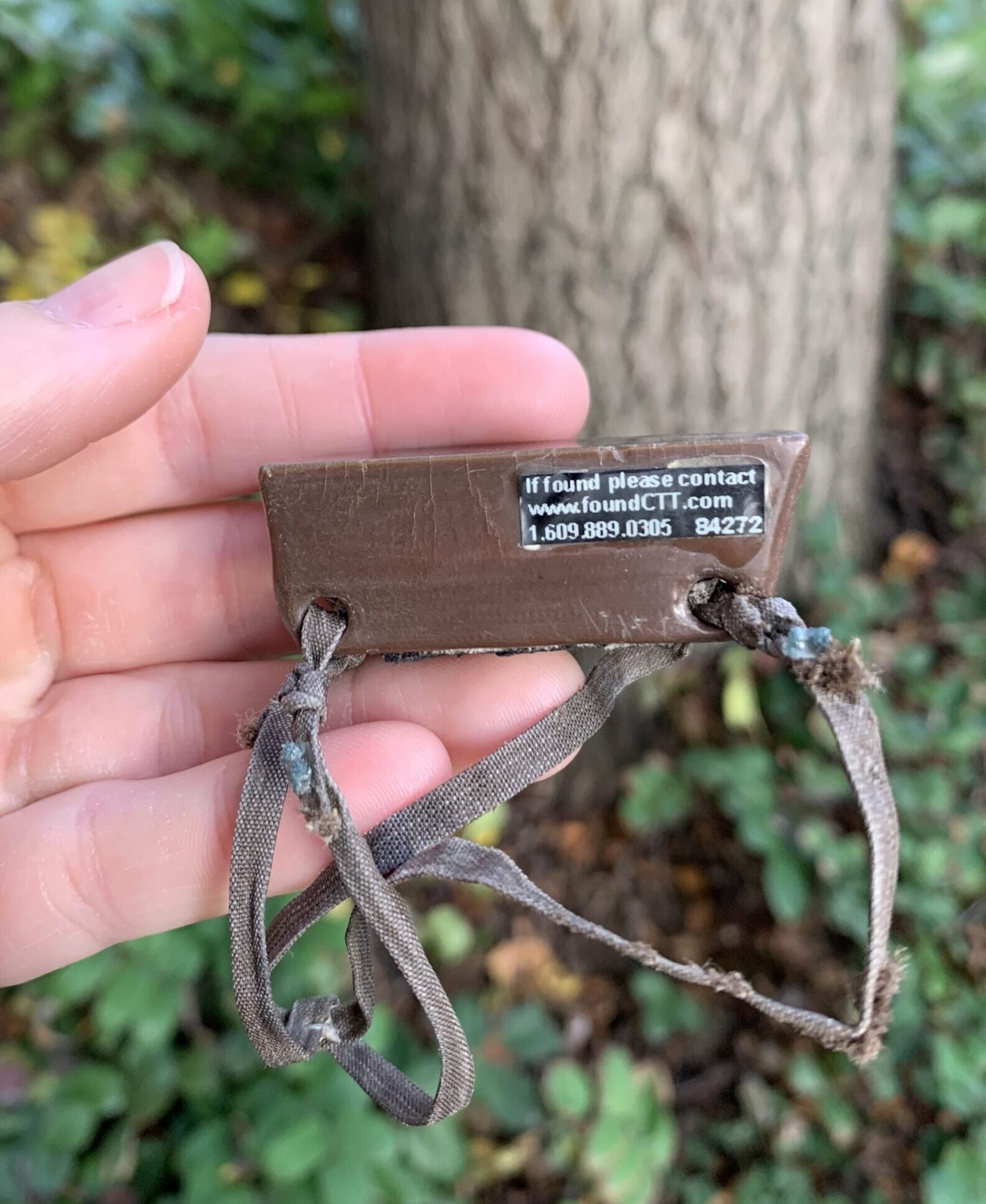
Utilizing GPS transmitter data, I plan to examine the movement of American Goshawks throughout their yearly cycle.
This will include where they choose to occupy breeding territories, where dispersing adults are moving, and what this means for current forest management and goshawk conservation in the Great Basin.
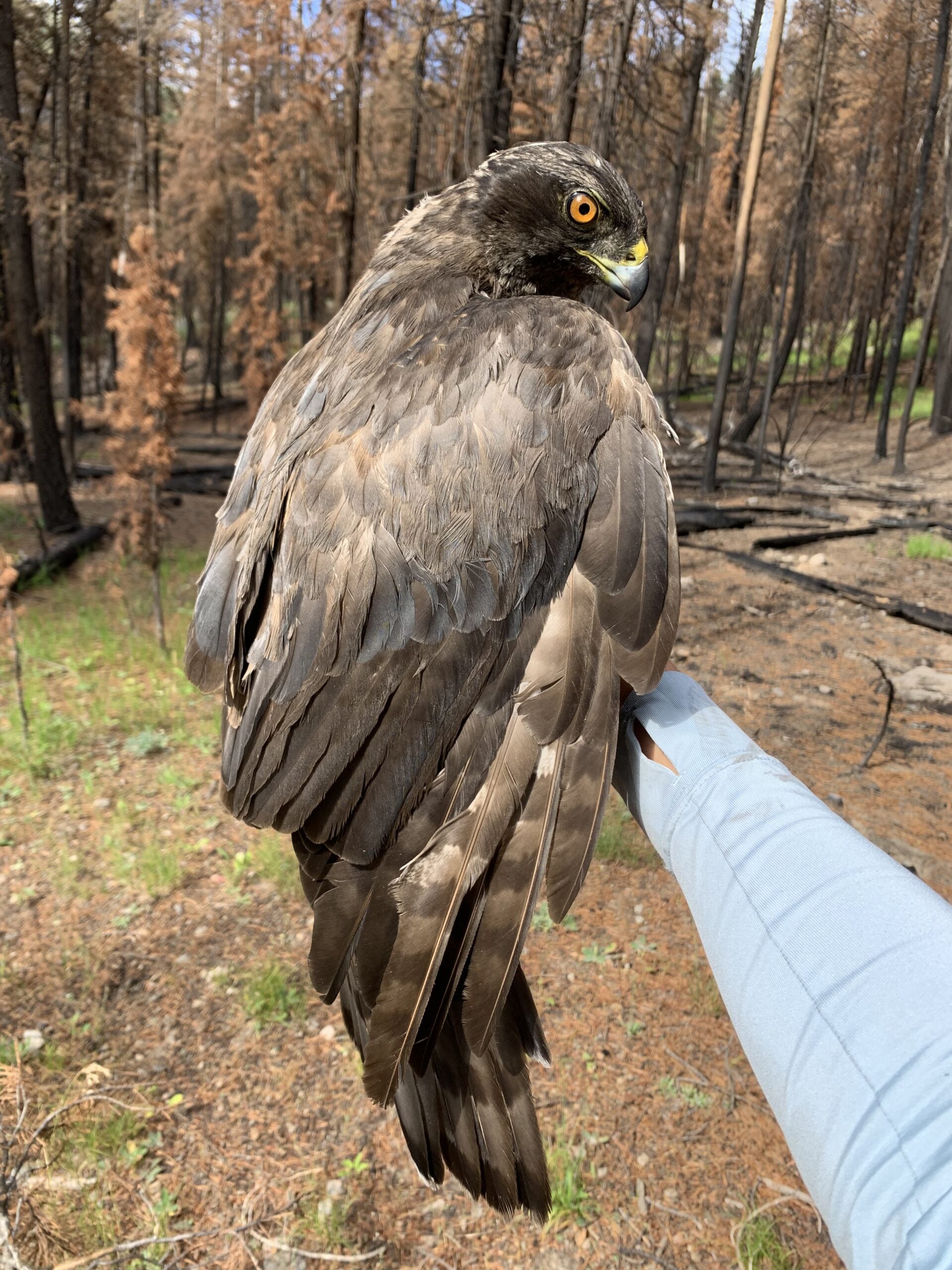
In addition to studying adult goshawk movement ecology, I also plan to study the microclimate conditions that goshawks experience at the level of the nest by placing thermologgers to remotely record data like temperature and relative humidity.
Nest data on this scale has never been collected before in this study area.
This will give us insight into questions such as – how warm does it actually get in the canopy where goshawks nest? What sun exposure do goshawk nestlings experience as canopy cover changes? How does this nest microclimate data influence goshawk nest success, likelihood of future occupancy, and long-term breeding trends in goshawk territories?
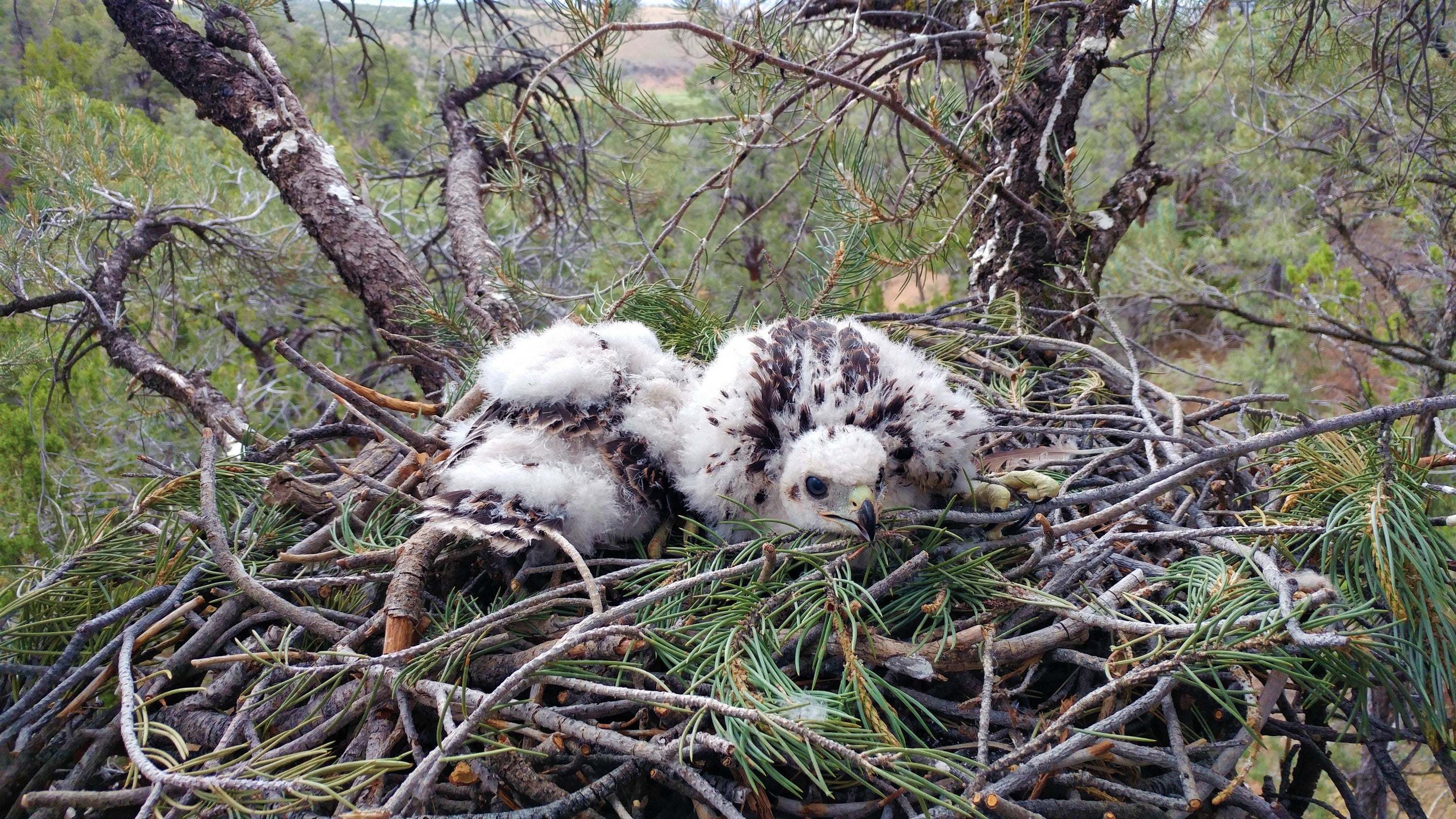
Collecting data with thermologgers would allow us to make more informed explanations about what mechanisms might be driving nest failures and decreased occupancy/productivity rates.
Support Our Goshawk Conservation Efforts
Transmitters and thermologgers needed for this project are a significant expense, and our research team has put together a fundraiser to help cover the costs. T-shirts and sweatshirts are available for purchase in IBO’s Bonfire shop, with artwork designed by a fellow Lucky Peak alum, Emma Regnier (@falcofous on Instagram).
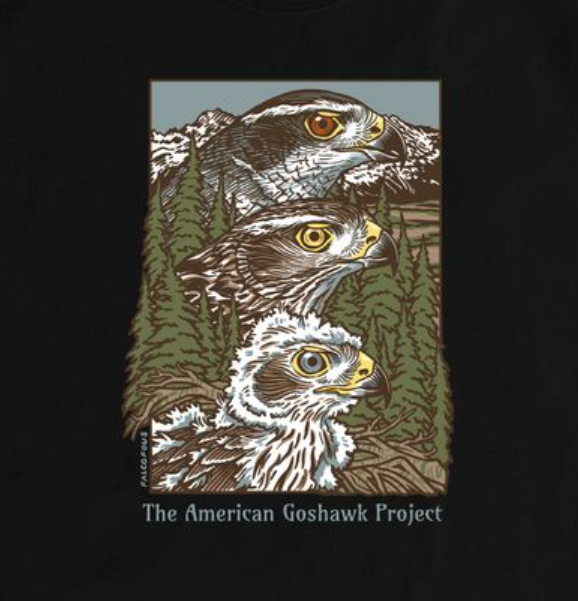
Research like this is not possible without your help, and we’d like to invite you to invest in this great project! Beyond the Bonfire fundraiser, we are also seeking any individuals or organizations who may be interested in sponsoring a goshawk by covering the costs of one transmitter. Depending on the specific unit, cellular or satellite units range $800-$1200 per unit plus annual data fees. By sponsoring a goshawk, donors can symbolically “name” a bird, receive special updates on that specific bird…
…and have the opportunity to join us for a day in the field!
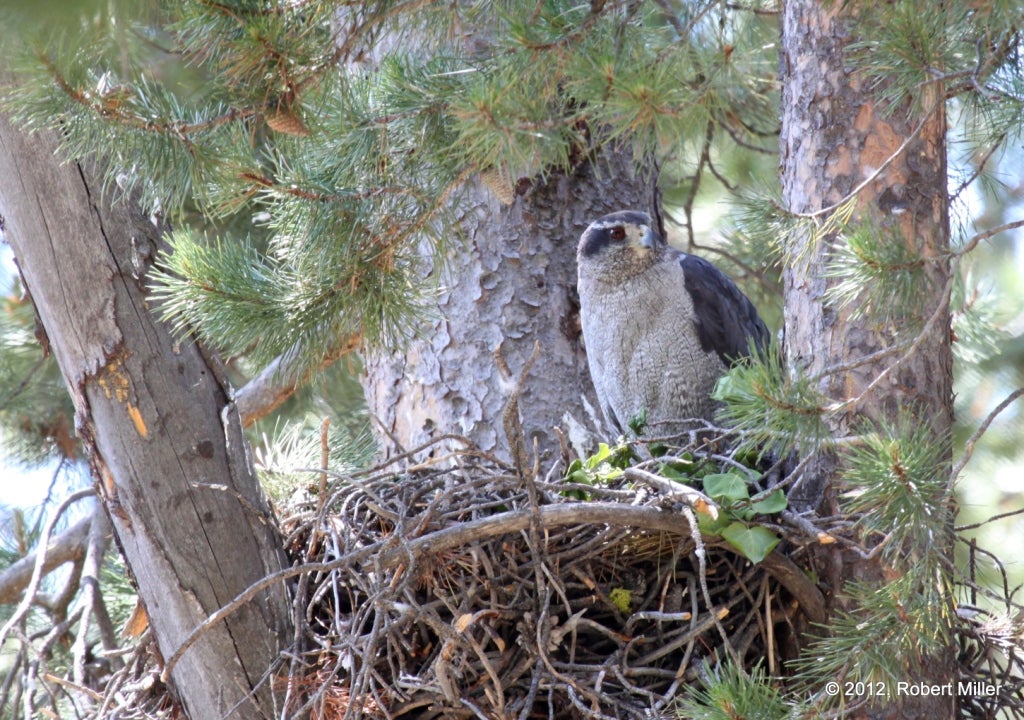
Stay Informed and Support the Project
You can stay up to date on the American Goshawk Project through Facebook (IBO Team Goshawk), and on Instagram (@americangoshawk)! Thank you for your interest and support!
This article is part of our 2023 end of the year newsletter! View the full newsletter here, or click “older posts” below to read the next article.
Make sure you don’t miss out on IBO news! Sign up to get our email updates.